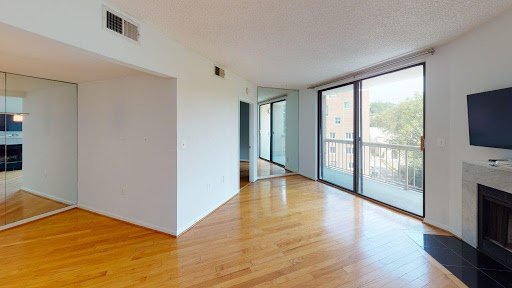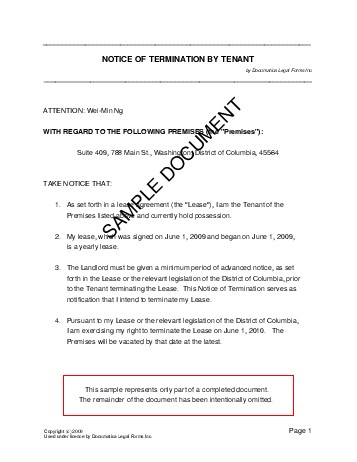legal requirements
Ensuring Rental Property Accessibility for All: Key Considerations

Ensuring Rental Property Accessibility for All: Key Considerations
When managing a rental property, ensuring accessibility is not only a legal requirement but also a moral responsibility. This guide explores essential considerations for landlords to make their properties accessible to all tenants, regardless of their mobility or special needs.
1. Legal Requirements and Compliance
The foundation of rental property accessibility is understanding and adhering to legal requirements. Landlords must familiarize themselves with accessibility laws and regulations that vary by jurisdiction. Compliance with these laws ensures that the property meets the necessary standards for accessibility, protecting landlords from legal complications.
2. Entryways and Exits: A Seamless Experience
The entry and exit points of a rental property should provide a seamless experience for tenants with mobility challenges. Installing ramps or ensuring step-free entryways facilitates easy access. Additionally, well-maintained paths and driveways contribute to a safe and accessible environment for all tenants.
3. Interior Layout and Maneuverability
The interior layout of the rental property plays a crucial role in accessibility. Consider the placement of furniture, the width of doorways, and the overall maneuverability within the living space. A spacious and thoughtfully designed interior allows tenants with mobility aids or wheelchairs to navigate comfortably.
4. Accessible Bathroom and Kitchen Features
Prioritizing accessible features in the bathroom and kitchen is essential. Lever-style door handles, grab bars, and a roll-in shower or accessible bathtub enhance bathroom accessibility. In the kitchen, consider lower countertops and accessible storage to ensure that all tenants can comfortably and safely use these spaces.
5. Lighting and Visibility
Proper lighting is essential for creating an accessible environment. Well-lit pathways, entrances, and common areas reduce the risk of accidents and enhance visibility for tenants with visual impairments. Incorporating adjustable lighting options can accommodate tenants with specific visual needs.
6. Flooring Considerations
The type of flooring in a rental property can impact accessibility. Hard, smooth surfaces facilitate easy movement for individuals using mobility aids. Avoiding high-pile carpets and ensuring that floor transitions are level and secure contribute to a more accessible living space.
7. Communication and Signage
Effective communication is a key component of accessibility. Clear and visible signage with easy-to-read fonts assists tenants in navigating the property. Additionally, providing information in multiple formats, such as written and visual instructions, accommodates tenants with varying communication needs.
8. Outdoor Spaces and Recreational Areas
Accessibility extends beyond the interior of the property to outdoor spaces. Ensuring that outdoor areas are accessible allows all tenants to enjoy recreational spaces. Well-maintained pathways, seating areas, and consideration for landscaping that accommodates diverse mobility needs contribute to a fully accessible property.
9. Flexibility in Accommodations
Landlords should be open to making reasonable accommodations based on individual tenant needs. Whether it’s installing handrails, adjusting counter heights, or allowing modifications to the living space, being flexible and responsive to accommodation requests fosters an inclusive and welcoming rental environment.
10. Regular Accessibility Audits and Updates
Accessibility is an evolving aspect of property management. Conducting regular accessibility audits and implementing updates as needed ensures that
Navigating Lease Termination Conditions: A Comprehensive Guide

Understanding Lease Termination Conditions: A Comprehensive Guide
Lease termination conditions are a crucial aspect of the landlord-tenant relationship, outlining the circumstances under which a lease can be legally concluded. This guide aims to provide a comprehensive overview of lease termination conditions, shedding light on the key considerations for both landlords and tenants.
1. Importance of Clear Terms in the Lease Agreement
The foundation of smooth lease termination lies in the clarity of the lease agreement. Both landlords and tenants must understand the terms and conditions specified in the document. This includes provisions related to notice periods, reasons for termination, and any associated penalties or obligations.
2. Legal Requirements and Notice Periods
Lease termination conditions are often governed by legal requirements, and these vary based on jurisdiction. It’s imperative to be aware of the notice periods mandated by local laws. Typically, landlords and tenants must provide advance notice before terminating a lease. Understanding and adhering to these legal requirements is crucial to avoid disputes.
3. Tenant Responsibilities and Property Condition
Tenants play a significant role in the lease termination process. The lease agreement may specify conditions related to the property’s condition upon departure. Tenants are usually responsible for returning the property in the same state as when they moved in, with allowances for reasonable wear and tear.
4. Landlord’s Obligations and Return of Security Deposit
Landlords, too, have responsibilities during the lease termination process. This includes conducting a thorough inspection of the property and returning the security deposit to the tenant, minus any legitimate deductions for damages or unpaid rent. Clearly outlining these obligations in the lease agreement is essential for a smooth transition.
5. Early Termination Clauses and Penalties
Lease agreements may include early termination clauses, allowing either party to end the lease before the agreed-upon term. However, such clauses often come with penalties or financial repercussions. Both landlords and tenants should be aware of these clauses and the associated costs, providing transparency and avoiding surprises.
6. Mutual Agreement for Lease Termination
In some cases, landlords and tenants may mutually agree to terminate the lease before the scheduled end date. This could be due to changes in circumstances for either party. Clearly documenting this mutual agreement and ensuring that both parties are on the same page is essential to prevent misunderstandings.
7. Eviction as a Last Resort
If a tenant violates the terms of the lease, eviction may be the last resort for landlords. However, specific conditions must be met for a legal eviction. It’s crucial for landlords to follow the legal process and adhere to local regulations to avoid legal complications.
8. Documentation and Communication
Clear communication and thorough documentation are paramount in navigating lease termination conditions. Both landlords and tenants should communicate any intentions to terminate the lease in writing and keep a record of all correspondences. This documentation can serve as crucial evidence in case of disputes.
9. Seeking Legal Advice When Needed
In complex situations or when facing challenges in the lease termination process, seeking legal
